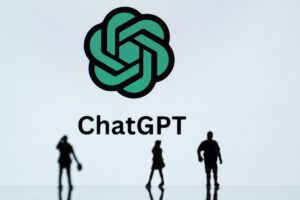Exploring AI Transformation: The Competition Between ChatGPT and DeepSeek

Understanding AI Transformation: A Look at ChatGPT vs. DeepSeek
Artificial intelligence (AI) is rapidly evolving, bringing significant changes to various sectors, including business, education, and entertainment. As different platforms emerge, the competition to provide the best AI solutions is intensifying. Two noteworthy contenders in this arena are ChatGPT and DeepSeek, each offering unique capabilities in natural language processing (NLP) and information retrieval.
What is ChatGPT?
ChatGPT, developed by OpenAI, is a conversational AI model that leverages machine learning techniques to generate human-like text. It can engage in discussions, answer queries, and assist with various tasks ranging from writing and content creation to customer service applications.
Key Features of ChatGPT
- Natural Language Understanding: ChatGPT can comprehend and generate text in a way that feels natural to users, mimicking human conversation.
- Versatile Applications: Its applications span multiple domains, including tutoring, content generation, and even programming assistance.
- Learning Capability: ChatGPT continuously improves its responses through user interactions and feedback, thus becoming more accurate over time.
What is DeepSeek?
DeepSeek, on the other hand, emphasizes information retrieval rather than conversation. This platform utilizes advanced algorithms to search through vast amounts of data, quickly fetching relevant information based on user queries.
Key Features of DeepSeek
- Focused Search Capabilities: DeepSeek is designed to provide precise results through efficient data mining techniques, making it suitable for research and analytical purposes.
- Data Integration: It can harness information from different sources, including databases, websites, and enterprise-level content, offering a comprehensive view.
- Customization: Users can tailor search parameters according to specific needs, allowing for more relevant and targeted results.
Comparing ChatGPT and DeepSeek
While both ChatGPT and DeepSeek operate within the realm of artificial intelligence, their core functionalities cater to different needs. Here’s a comparative analysis:
| Feature | ChatGPT | DeepSeek |
|---|---|---|
| Primary Functionality | Engaging in conversation and assistance | Information retrieval |
| Interaction Style | Conversational and interactive | Focused and efficient |
| User Utility | Content creation, Q&A, tutoring | Research, data analysis |
| Application | Customer service, educational tools | Academic research, business insights |
Potential Impacts of AI Transformation
AI is transforming how businesses operate and interact with customers. Here are some notable impacts:
- Improved Efficiency: Both ChatGPT and DeepSeek can automate repetitive tasks, allowing employees to focus on more strategic initiatives.
- Enhanced Customer Experience: AI tools can provide instant responses and solutions, improving user satisfaction and engagement.
- Data-Driven Decision Making: By using AI for data analysis and retrieval, organizations can make better-informed decisions that drive growth.
The Future of AI in Everyday Life
As organizations continue to adopt AI technologies, the landscape will undoubtedly evolve. The AI transformation is not just about automation but also about enhancing human capability. Here are some trends to watch:
- Integration of AI Across Sectors: From healthcare to finance, industries will increasingly integrate AI to streamline operations and improve services.
- Focus on Ethical AI: Discussions surrounding ethical AI practices will gain prominence as more companies explore the implications of their technology on society.
- User-Centric Design: Future AI tools will focus on providing better user experiences, taking into account user feedback and preferences to improve interaction.
In the competitive landscape of AI, understanding the strengths and weaknesses of platforms like ChatGPT and DeepSeek is essential for organizations looking to harness their full potential. Each tool offers distinct advantages, making them suitable for different applications, thereby shaping the future of technology engagement across various fields.




